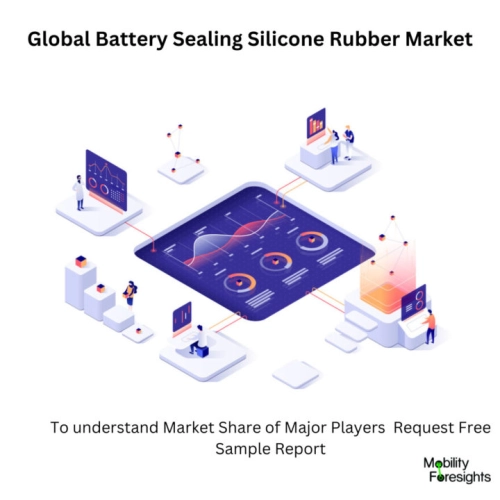
- Get in Touch with Us

Last Updated: Apr 25, 2025 | Study Period: 2023-2030
Without batteries, e-mobility is not possible.A variety of solutions to enhance the functionality, performance, and safety of batteries in e-mobility have been developed with extensive experience in the automotive, semiconductor, and power electronics industries.
The battery pack design, pack topology, cell form factor, and several other aspects affect a battery pack's performance and safety. However, silicones can also significantly contribute increasing service life and enhancing performance.
A significant factor in an electric vehicle's efficiency and longevity is keeping the battery pack sealed off from the environment. Offering a wide spectrum of battery pack housing options, the products' materials span from butyl-coated PVC and micro-cellular PUR foams to silicone foam rubbers and foam-in-place gasketing.
Low compression sets and fire-blocking solutions are used to seal batteries from the environment to protect the battery pack.

Global battery sealing silicone rubber market accounted for $XX Billion in 2022 and is anticipated to reach $XX Billion by 2030, registering a CAGR of XX% from 2023 to 2030.
A new line of liquid silicone rubbers that are primerless, self-adhesive, and self-lubricating has been released by multinational chemical maker Dow. The mobility and transportation sectors are targeted by the new SILASTIC SA 994X LSR series, which is made for two-component injection moulding with thermoplastic substrates.
The new product line is targeted for automotive applications, such as radiator gasket seals, battery vent gasket seals, connector seals, and environmental protection seals for the lidar and radar housings of autonomous vehicles.
According to the manufacturer, the products provide benefits to manufacturers such as instant and strong adhesion to a variety of plastic and metal substrates without the need for additional heat treatment, rapid development of bond strength, 12-month shelf life, and durable adhesion under heat and humidity.
The team at Dow is constantly working toward higher global level innovation within this product category because liquid silicone rubbers are a crucial material in numerous mobility and transportation applications.
It is crucial that they have the tools they need to stay up with change as the requirements of automobile OEMs and tiers continue to expand in response to the rapid change occurring throughout the industry.
| Sl no | Topic |
| 1 | Market Segmentation |
| 2 | Scope of the report |
| 3 | Abbreviations |
| 4 | Research Methodology |
| 5 | Executive Summary |
| 6 | Introduction |
| 7 | Insights from Industry stakeholders |
| 8 | Cost breakdown of Product by sub-components and average profit margin |
| 9 | Disruptive innovation in the Industry |
| 10 | Technology trends in the Industry |
| 11 | Consumer trends in the industry |
| 12 | Recent Production Milestones |
| 13 | Component Manufacturing in US, EU and China |
| 14 | COVID-19 impact on overall market |
| 15 | COVID-19 impact on Production of components |
| 16 | COVID-19 impact on Point of sale |
| 17 | Market Segmentation, Dynamics and Forecast by Geography, 2023-2030 |
| 18 | Market Segmentation, Dynamics and Forecast by Product Type, 2023-2030 |
| 19 | Market Segmentation, Dynamics and Forecast by Application, 2023-2030 |
| 20 | Market Segmentation, Dynamics and Forecast by End use, 2023-2030 |
| 21 | Product installation rate by OEM, 2023 |
| 22 | Incline/Decline in Average B-2-B selling price in past 5 years |
| 23 | Competition from substitute products |
| 24 | Gross margin and average profitability of suppliers |
| 25 | New product development in past 12 months |
| 26 | M&A in past 12 months |
| 27 | Growth strategy of leading players |
| 28 | Market share of vendors, 2023 |
| 29 | Company Profiles |
| 30 | Unmet needs and opportunity for new suppliers |
| 31 | Conclusion |
| 32 | Appendix |